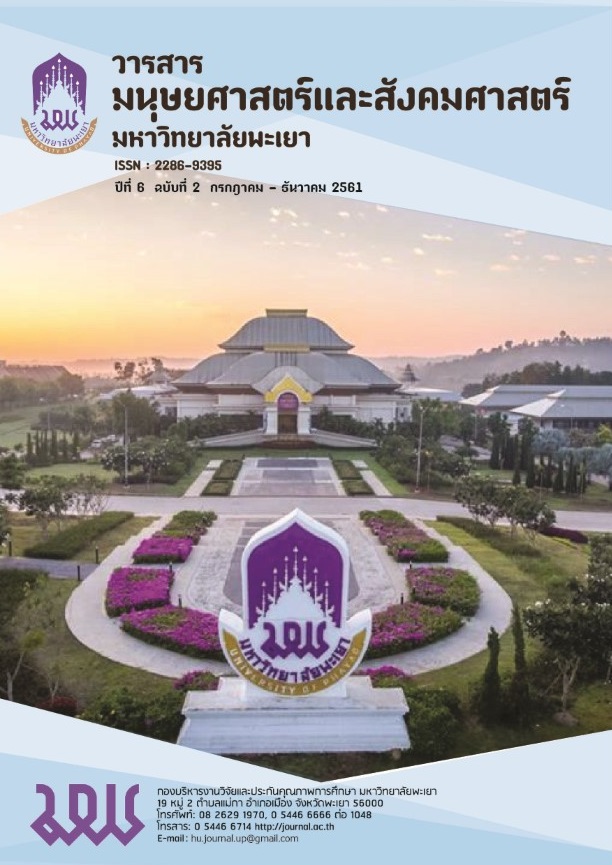Factor analysis of STEM education teacher competencies under the secondary educational service area office 19
Keywords:
Factor analysis, Teacher competencies, STEM educationAbstract
The purposes of this research were 1) to study the factors of STEM education teacher competencies under the secondary educational service area office 19 and 2) to test the consistency of the structural equation model of STEM education teacher competencies with empirical data. The proportional two stage random sampling was applied for 400 STEM education teacher competencies under the secondary educational service area office 19.
The research tool was a five level rating scale questionnaire. There are 63 items. Data was analyzed by using: percentage, mean, standard deviation, skewness, kurtosis, chi-square, pearson’s product-moment correlation coefficient and confirmatory factor analysis. The research findings were as follows:
- The factor of STEM education teacher competency has three factors: Knowledge, Skills and Attribute. The factor loading of three factors are 0.26, 0.27 and 0.28 respectively and factor scores were between 0.01 to 0.26.
- The test result of the consistency of structural equation model with the empirical data showed that the Chi-Square goodness of fit test at 42.15 with 49 degree of freedom; p-Value = 0.75; Goodness of Fit Index (GFI) = 0.98; Adjusted Goodness of Fit Index (AGFI) = 0.97; Comparative Fit Index (CFI) = 1.00; and Root Mean Square Error of Approximation (RMSEA) = 0.00. Thus, the model has a good consistency with empirical data.
References
จำรัส อินทลาภาพร. (2558). การพัฒนาหลักสูตรฝึกอบรม เพื่อเสริมสร้างความสามารถในการจัดการเรียนรู้ตามแนวสะเต็มศึกษา สำหรับครูระดับประถมศึกษา. (ปริญญานิพนธ์ปรัชญาดุษฎีบัณฑิต). มหาวิยาลัยศรีนครินทรวิโรฒ.
ดอกรัก แสนผล. (2559). การพัฒนาแนวทางเสริมสร้างสมรรถนะครูด้านการจัดการชั้นเรียนสำหรับสถานศึกษาขนาดเล็ก สังกัดสำนักงานเขตพื้นที่การศึกษาประถมศึกษาอุดรธานี เขต 4. (ปริญญานิพนธ์มหาบัณฑิต สาขาวิชาการบริหารการศึกษา). มหาวิทยาลัยมหาสารคาม.
บรรพต รู้เจนทร์. (2557). ภาวะผู้นำทางการเรียนการสอนของผู้บริหารสถานศึกษาที่ส่งผลต่อสมรรถนะครูในสถานศึกษา สังกัดองการบริหารส่วนจังหวัดนครราชสีมา (วิทยานิพนธ์ปริญญาศึกษาศาตรมหาบัณฑิต). มหาวิทยาลัยขอนแก่น.
พิมพันธ์ เดชะคุปต์. (2560). ทักษะ 7C ของครู 4.0. กรุงเทพฯ: จุฬาลงกรณ์มหาวิทยาลัย.
ไพพรรณ เกียรติโชติชัย. (2536). ความเป็นครู. กรุงเทพฯ: สถาบันราชภัฎสวนดุสิต.
ภาสกร เรืองรอง และคณะ. (2557). เทคโนโลยีการศึกษากับครูไทยในศตวรรษที่ 21. วารสารปัญญาภิวัฒน์, 5 (ฉบับพิเศษ), 198.
วันเพ็ญ นันทะศรี. (2559). โมเดลความสัมพันธ์โครงสร้างปัจจัยที่ส่งผลต่อคุณลักษณะความเป็นครูวิชาชีพในศตวรรษที่ 21. การประชุมวิชาการและเสนอผลงานวิจัยระดับชาติ ครั้งที่ 3 ก้าวสู่ทศวรรษที่: บูรณาการงานวิจัย ใช้องค์ความรู้ สู่ความยั่งยืน. นครราชสีมา: วิทยาลัยนครราชสีมา.
ศูนย์สะเต็มศึกษาแห่งชาติ. (2557). คู่มือหลักสูตรอบรมครูสะเต็มศึกษา (สสวท.). กรุงเทพ:กระทรวงศึกษาธิการ.
สถาบันส่งเสริมการสอนวิทยาศาสตร์และเทคโนโลยี (สสวท.) และกระทรวงศึกษาธิการ. (2557). หลักสูตรอบรมศึกษานิเทศก์. กรุงเทพมหานคร.
สุพรทิพย์ ธนภัทรชิวัต, อมรรัตน์ วัฒนาธร, เทียมจันทร์ พานิชย์ผลินไชย, และปกรณ์ ประจัญบาน. (2558). การพัฒนารูปแบบการจัดประสบการณ์วิชาชีพครูเพื่อส่งเสริมคุณลักษณะครูในศตวรรษที่ 21. วารสารศึกษาศาสตร์ มหาวิทยาลัยนเรศวร, ฉบับที่ 1, 33-48.
สำนักงานเลขาธิการสภาการศึกษา. (2553). ข้อเสนอเชิงนโยบายการพัฒนาครูและบุคลากรทางการศึกษา. กรุงเทพฯ: สำนักงานเลขาธิการสภาการศึกษา.
อภิณห์พร สถิตภาคีกุล และคณะ. (2555). การวิจัยและพัฒนาหลักสูตรการผลิตครูในศตวรรษที่ 21: กรณีศึกษาคณะครุศาสตร์ มหาวิทยาลัยราชภัฎนครศรีธรรมราช. นครศรีธรรมราช: มหาวิทยาลัยราชภัฎนครศรีธรรมราช.
อาภรณ์ ภู่วิทยพันธ์. (2548). Competency Dictionary. กรุงเทพฯ: เอช อาร์ เซ็นเตอร์.
Kaplan, Robert S and Norton David P. (2004). Strategy Maps. Massachusetts: Harvard Business School Publishing Corporation.
Schermelleh-Engel, K., Moosbrugger, H., and Müller, H. (2003). Evaluating the fit of structural equation models: Test of significance and descriptive goodness-if-fit measures. Methods of Psychological Research online, 8(2): 23-74.
Spencer, M and Spencer, M.S. (1993). Competence at work: Models for Superiors Performance. New York: John Wiley & Sons.
Downloads
Published
How to Cite
Issue
Section
License
ผู้นิพนธ์ต้องรับผิดชอบข้อความในบทนิพนธ์ของตน มหาวิทยาลัยพะเยาไม่จำเป็นต้องเห็นด้วยกับบทความที่ตีพิมพ์เสมอไป ผู้สนใจสามารถคัดลอก และนำไปใช้ได้ แต่จะต้องขออนุมัติเจ้าของ และได้รับการอนุมัติเป็นลายลักษณ์อักษรก่อน พร้อมกับมีการอ้างอิงและกล่าวคำขอบคุณให้ถูกต้องด้วย
The authors are themselves responsible for their contents. Signed articles may not always reflect the opinion of University of Phayao. The articles can be reproduced and reprinted, provided that permission is given by the authors and acknowledgement must be given.







